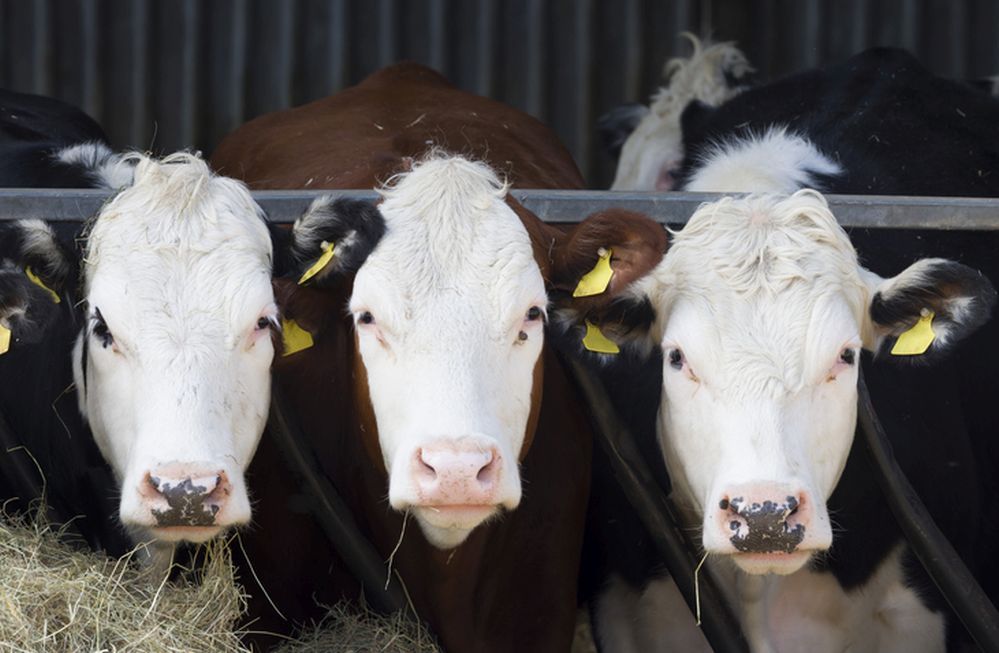Australian synthetic biology startup Number 8 Bio has raised A$1.8 million ($1.2 million) in a pre-seed round to fund a novel approach to cutting methane emissions from animal agriculture using yeast.
The funding—from Main Sequence, Possible Ventures, UNSW Founders, and Bioplatforms Australia—will help the Sydney-based firm further develop its IP and scale up its fermentation-based platform.
A potent greenhouse gas, methane is produced in ruminants such as cows and sheep in a stomach compartment called the rumen. Here, microbes break down complex carbs to produce carbon dioxide and hydrogen, which are in turn converted into methane by another set of microbes (methanogens) and belched out.
Several companies have developed feed additives claimed to inhibit the production of enteric methane, from DSM (3-NOP—trade name Bovaer), to Agolin (a blend of plant extracts) and Mootral Ruminant (garlic and citrus extracts) to CH4 Global, Symbrosia, Future Feed, Dulabio and Volta Greentech (red seaweed extracts). These generally work by disrupting the metabolic pathways of methanogens.
Of the available solutions above, compounds in red seaweed such as bromoform appear to be the most effective methane inhibitors, Number 8 Bio cofounder Dr. Tom Williams told AgFunder News (AFN).
“The leading product, in our opinion, is seaweed, because it produces a whole host of inhibitors that work incredibly well. Bromoform inhibits the key metabolic pathway that the methanogens [in the bovine digestive system] use to make methane. Seaweed studies have shown up to a 98% decrease in methane emissions and often a really profound increase in productivity for farmers as well [as they can use less feed].”
Yeast fermentation vs seaweed production
However, there are more efficient ways to produce bromoform and other methane inhibitors than growing seaweed, claimed Williams.
“Some of these companies are growing seaweed in land-based tanks. But the limitation there is that it’s difficult to scale up photosynthetic processes because of a phenomenon called cellular shading. The density that you can grow photosynthetic microorganisms in water is limited by the fact that they block other cells in the tank from receiving light.
“And what that means is that they top out at a relatively low density, whereas you don’t have that problem with microbes such as yeast, which you can grow to the level of a thick pea soup in a couple of days.”
Number 8 Bio—cofounded last year by Williams (CEO) and his former PhD student Alex Carpenter (CSO)—engineers yeast to produce bromoform and other methane inhibitors in fermentation tanks, said Williams, who was previously chief scientific officer at the Australian Genome Foundry at Macquarie University.
“We try and bring as many active ingredients as possible into the product, not just from seaweed but from other sources found in nature as well.”
“Number 8 Bio perfectly captures the SynBio approach: taking inspiration from nature with the natural potential of seaweed and combining it with the benefits of industrially scalable yeasts.” Gabrielle Munzer, partner, Main Sequence

No costly downstream processing
Engineering microbes to produce target molecules in big steel fermentation tanks using precision fermentation isn’t cheap. However, Number 8 Bio is not engaging in costly downstream processing technologies to extract and purify the end product, but is instead harvesting the whole biomass, said Williams.
“A lot of companies that do what we do with biotechnology have insane costs because they have to purify the active molecules. Our product stays in the yeast cells, and the cows eat the whole thing. It just looks like dried baker’s yeast that can be mixed into the cow’s food, which makes our downstream processing really cheap and scalable.”
He added: “We’ve been able to produce a whole host of inhibitors of methanogenesis in yeast, some of which are seaweed molecules. To benchmark, you can make a kilogram of yeast for about $2 at the very largest scale. And you’d want to be including it at 10s of grams per day per animal.
“So that gives you the right price for the farmer, whereas competitors in the space are selling doses per day in the range of 40 cents to $2, which is outside of what farmers are generally willing to pay at the moment.”
Improved feed conversion ratio
So what’s the incentive for farmers?
It’s twofold, according to Williams. First, their customers are pressuring them to reduce greenhouse gas emissions, such that using feed that reduces enteric methane may ultimately become a condition of doing business.
But most importantly, he claimed, it can save them money, because they can feed their cows less: “Studies have shown that when methane emissions are knocked out you get an improved feed conversion ratio.”
But at this early stage, is it possible to show farmers any hard numbers about the potential return on investment?
According to Williams: “You’ve got to do thorough trials with a large number of animals. And even beyond that, you’ve got to actually demonstrate that the products work in a context that’s relevant to them.
“I was speaking with a feedlot manager the other day that noticed that a lot of animal trials for products like this are done when the cows are eating grass. And in that context, they actually make a lot more methane than if they are eating a more energy-rich feedlot diet. And that means that if you’re testing a methane mitigation additive, the effect is going to be bigger and better [in the grass-fed animals] because they make more methane.
“So you’ve got to do multiple trials in different places with different diets. What we’re working on is locking in that effect in multiple different contexts so that the farmer can really rely on that economic incentive.”
‘We have to work with farmers to decarbonize’
As for climate tech investors, he said, some believe that all available capital should go into replacing animal agriculture through plant-based, fermentation-based or cell-cultured meat and dairy. However, others argue that we have to invest in reducing the environmental impact of animal agriculture at the same time.
“Investors have found what we’re doing quite attractive because it’s obvious to everyone that we have to work with farmers to decarbonize. They also like the angle of environmental impact coupled with economic incentives for farmers.”
Next gen microbes will feed off greenhouse gases, not sugar
So what’s next for Number 8 Bio?
“We want to show using model systems in the lab that we can decrease emissions and from there, we will go on to cattle trials and commercialization,” said Williams, who is also exploring the potential of using microbes that can use greenhouse gases rather than agricultural feedstocks like sugar as a carbon [food] source.
“Right now, we’re feeding our yeast sugars, but in the future, we’re going to be switching to microorganisms that grow directly on greenhouse gases such as methane and carbon dioxide, which is more sustainable and will lower costs.”




